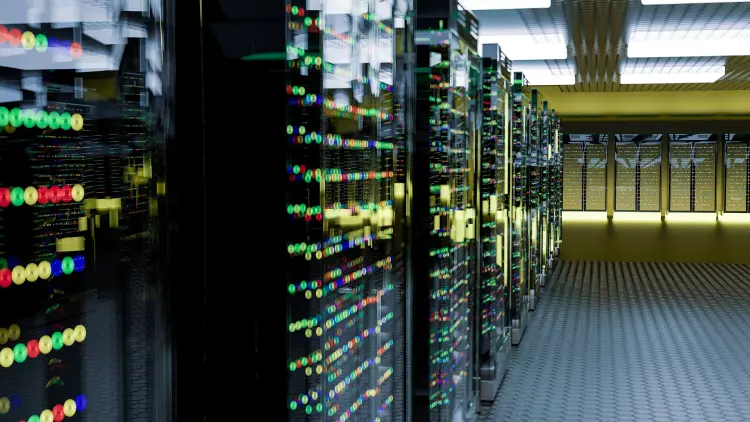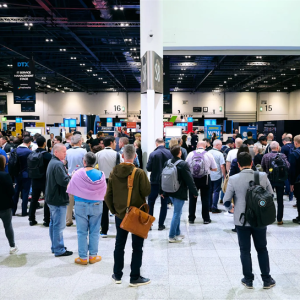
Amazon Web Services (AWS) has announced a global expansion of its Local Zones programme, which will see it offer services usually provided from the cloud from data centres at the edge of the network, in proximity to its customers. While it may seem paradoxical for the world’s largest cloud computing provider to commit more resources to providing local services, the move reflects the interconnected nature of cloud and edge computing, and the extent to which Amazon and its Big Tech rivals have been key proponents of the emerging edge ecosystem.

Local Zones will offer “compute, storage, database, and other AWS services at the edge of the cloud near large population, industry, and IT centres” according to Amazon’s announcement last week. Prasad Kalyanaraman, vice president of infrastructure services at AWS, added that being closer to its customers will enable the company to deliver the on-device data processing and ultra-low latency which have long been touted as key benefits of edge computing.
“The edge of the cloud is expanding and is now becoming available virtually everywhere,” Kalyanaraman said. “AWS Local Zones will now be available in more than 30 new locations globally, providing customers with a powerful new capability to leverage cloud services within a few milliseconds of hundreds of millions of end users around the world.”
The opportunity presented by edge computing is one that tech’s biggest names are unsurprisingly keen to capitalise on. So far, AWS and its cloud rivals have dominated edge deployments, but as the technology matures they may find they have more competition for business.
Big Tech and edge computing: the story so far
The AWS Local Zones programme started in the US, where 16 sites are now live. A further 32 zones in global locations will be added over the next two years, Amazon says. So far the UK is not on the list of sites.
AWS also offers Wavelength, a platform for developing and deploying products and for the mobile edge utilising 5G networks. And in the US, it offers Sidewalk, a so-called 'mesh' network that uses a small amount of bandwidth from Amazon smart devices, such as its Echo smart speakers, in homes and businesses to provide stable network connectivity across urban areas for connected edge devices.
Despite concerns about its potential impact on privacy, last month Amazon announced plans to launch a 'bridge' device to help extend Sidewalk into areas where smart devices are less common, such as business parks, universities and public spaces. This suggests Amazon remains confident the network will be a hit with its customers.
The two other big players in the cloud computing market, Microsoft Azure and Google Cloud, both have similar projects. Google Cloud offers edge-enabled services at locations around the world, and Microsoft is beginning the roll out of its own edge zones in the US. Azure users can also access Stack Edge, where they can order customised hardware for their edge deployments.
"We can see a trend across Big Tech companies towards developing their own edge infrastructure to bring their cloud capabilities outside data centre down to local cloud and then to telco networks and finally to customer premises," says Alexandra Rotaru, research analyst at IDC. "The aim is to enable all types of customer workloads across different edge locations where it is more efficient and smarter to deploy, reducing costs and improving performance through low latency."
Big Tech's interest in edge computing is likely being driven by two key factors: an expectation that spending on edge devices and services will increase dramatically, and the idea that businesses will move more workloads to the edge to take advantage of lower latency and increased security. In terms of spending, IDC expects edge computing spending to reach $64bn by 2025 in Europe alone, by which time Gartner predicts 75% of workloads will be processed on devices at the edge rather than in the cloud or traditional data centres.
Chris Drake, principal analyst for global IT technology and software at GlobalData, is sceptical that edge deployments will reach the level suggested by Gartner - the analyst company predicts the edge computing market to reach $17.8bn by 2025 - but says it is inevitable edge will play a larger role for many businesses.
"There are plenty of workloads which will require both edge and cloud, particularly if they involve AI algorithms which are likely to require the cloud for training," he says. However, he believes cloud will continue to play a central role for business users. "We're not going to see a takeover by edge and a demise of the relevance and importance of cloud anytime soon," Drake says. "But some services will change and there will be a gradual evolution."
IDC's Rotaru agrees: "Even though the edge portion could be small at the beginning, there is a great opportunity for Big Tech companies to develop this area to include edge in their offering, as more and more customers appreciate providers being able to offer a full technology stack," she says.
What is the future for Big Tech and edge computing?
While early edge deployments from Big Tech have focused on general provision of their existing cloud services at the edge, more specialised use cases are starting to emerge. Streaming giant Netflix was among the customers cited in Amazon's Local Zone announcements. The company's graphic artists, who previously used powerful, specialised computers, can now work on standard workstations thanks to the low latency offered by the Local Zone edge network, it said.
Other industries are also switching on to edge's potential. "There are some interesting use cases in healthcare, being able to quickly analyse things like colonoscopy scans to determine whether a tumour is cancerous," says Kathryn Weldon, principal analyst for enterprise mobility and IoT at GlobalData. "You've got a lot of consumer and entertainment stuff, as well as anything that involves augmented or virtual reality training for enterprises."
Drake says it is likely the Big Tech companies will develop more specialised offerings for these kinds of use cases, as well taking a look at how they can provide more edge services in hazardous environments where connectivity is a problem.
AWS already offers its customers Snowcone, a device weighing just 2kg that can store and process up to eight terabytes of data, and is designed for use by first responders or in difficult conditions where connectivity is limited. "These sorts of solution are useful for remote healthcare sites, as well as sectors like mining where they might be operating autonomous vehicles," he says.
Can anyone stop Big Tech dominating edge computing?
To date, Big Tech has typically partnered with telecoms operators and equipment providers in its edge roll outs, with the telco providing connectivity through their products and networks, and the cloud provider delivering services. Microsoft, for example, has partnered with AT&T on the roll-out of its edge zones.
IDC's Rotaru says these kind of partnerships are likely to remain key to the development of edge computing. "Both types of vendors have different complementary capabilities that could be mixed to offer an integrated edge solution and building a common go-to-market approach," she says. "Telco providers often extend their core communications capabilities and add edge services and have the role to connect every sensor, machine or even person and this is critical in many use cases or workloads."
But the Big Tech companies may have other plans. Tech Monitor has reported on the development of cloud-native 5G, where traditional networking functions are delivered virtually from the cloud, and GlobalData's Weldon says many telcos fear they may soon be cut out of the edge computing loop. "A lot of telcos went blindly into partnership with the cloud hyperscalers because they had been talking about the wonders of 5G and only belatedly realised half of the benefits of 5G couldn't be delivered without edge computing," she says. "They're now starting to worry about these partnerships because in a lot of cases the joint monetisation isn't there; the telco just provides the network and the hyperscaler is doing most of the work."
Telecoms equipment providers are forging partnerships with other tech companies. Nokia, for example, recently announced a deal with former IBM managed services division Kyndryl, in which the companies will jointly deliver edge networking connectivity via private 5G networks, with Kyndryl managing the services. Drake says the more traditional IT services providers are best placed to grab a slice of the edge market from the hyperscalers. "Companies like Dell, IBM and Lenovo, which provide traditional data centre services are putting a big emphasis on edge," he says. "None of them are breaking out their [edge] revenues yet, but I would expect that eventually, edge will account for a reasonable share of the revenues."
As for new entrants joining the market, Drake believes this is an unlikely prospect. "There are companies with interesting business models, offering more flexibility when it comes to edge services," he says. "But the likelihood is if they are successful they themselves will become acquisition targets for the Big Tech companies."






